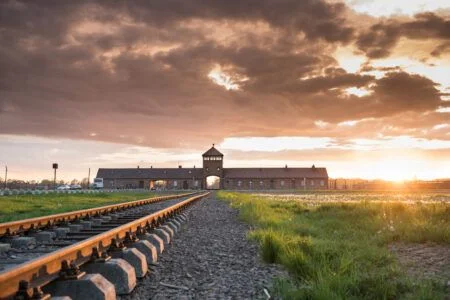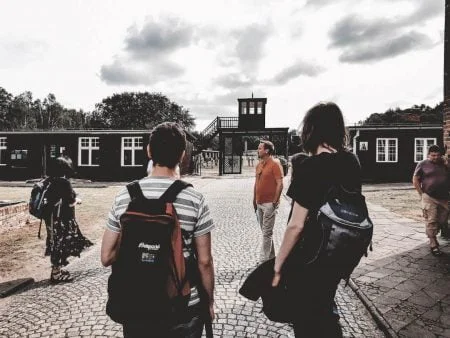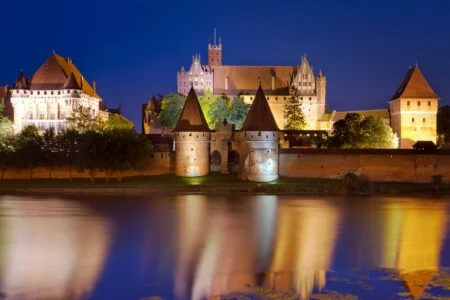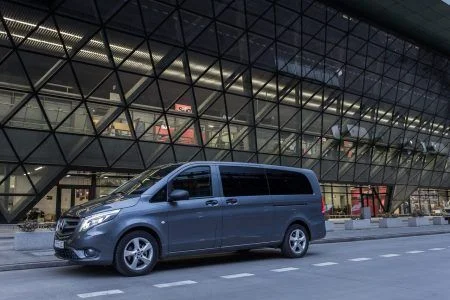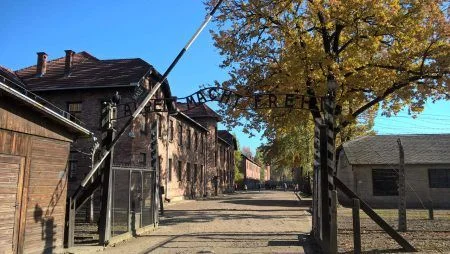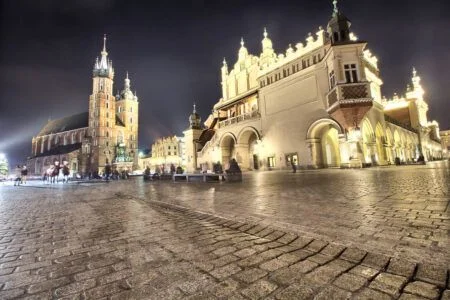Where is Auschwitz in Poland? A Comprehensive Guide for Visitors
Plan Your Visit to One of the Most Important Historical Sites in Europe
Visiting Auschwitz is a deeply emotional and thought-provoking experience. As one of the most significant historical sites in Europe, Auschwitz has become a symbol of the Holocaust and a crucial reminder of the atrocities committed during World War II. This blog post serves as a complete guide for those planning to visit the former Nazi concentration and extermination camp, officially known as Auschwitz-Birkenau. We’ll explore its location, how to get there, historical context, practical tips, and everything else you need to know before your visit.
Whether you’re visiting from Kraków, Warsaw, or elsewhere in Poland, understanding the exact location of Auschwitz and how to reach it can make your travel experience smoother and more meaningful. This guide includes essential information for tourists, including transport options, visiting hours, ticket advice, and local tips to help you prepare for your visit to Auschwitz in Poland.
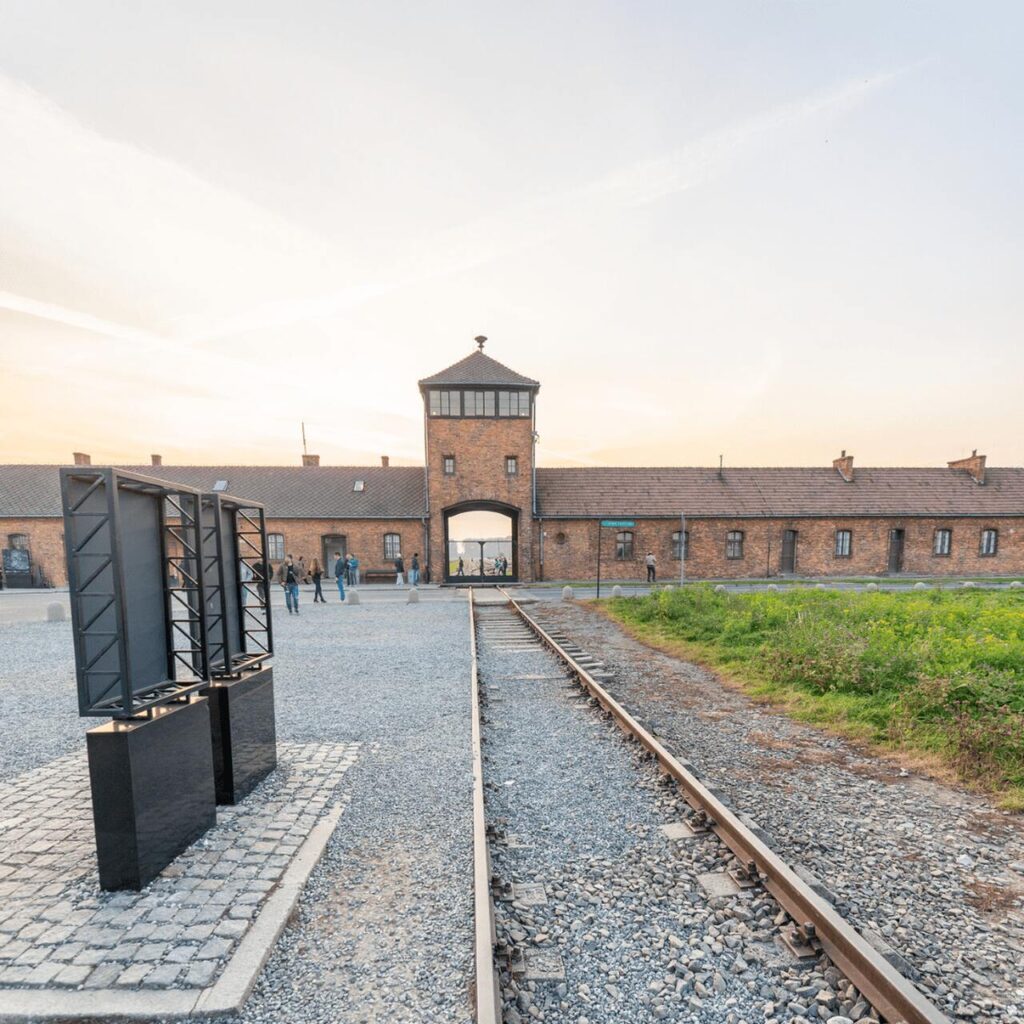
Table of Contents
- Where is Auschwitz located?
- Brief History of Auschwitz-Birkenau
- How to Get to Auschwitz from Major Polish Cities
- Visiting Auschwitz: What to Expect
- Opening Hours and Entry Requirements
- Should You Book a Guided Tour?
- Travel Tips and Etiquette
- Nearby Places Worth Visiting
- FAQ: Auschwitz Location and Visit Logistics
- Summary and Visitor Resources
Where is Auschwitz Located?
Auschwitz is located in southern Poland, near the town of Oświęcim, in the Lesser Poland Voivodeship (Małopolska region). The German name for Oświęcim is Auschwitz, which is where the concentration camp complex gets its name. Today, the name “Auschwitz” is associated globally with the horrors of the Holocaust. The camp’s location was strategically chosen by the Nazis due to its proximity to railway lines and central position in occupied Europe. This makes it easily accessible for modern-day visitors arriving from various parts of the country or continent.
Oświęcim is approximately:
- 70 km (43 miles) west of Kraków
Kraków is the most popular starting point for visitors heading to Auschwitz, with frequent guided tours and shuttle services available. The drive from Kraków takes about 1 hour and 15 minutes, depending on traffic, and public transport options are also reliable. - 35 km (22 miles) southeast of Katowice
Katowice, a growing industrial and business hub, offers direct connections to Oświęcim via regional trains and roads. It’s a convenient alternative departure point, especially for those arriving by plane at Katowice Airport. - 320 km (199 miles) south of Warsaw
Although farther away, Warsaw remains a viable option for a day trip to Auschwitz with an early departure. Trains from Warsaw to Oświęcim typically require a transfer in Kraków or Katowice, with the full journey taking about 4.5 to 5 hours.
Despite being relatively small, Oświęcim is known worldwide due to its tragic past. The name of the town is forever linked with one of the darkest chapters in human history. Visitors arriving here are often struck by the quiet atmosphere and the weight of historical significance. The site is well connected to major Polish cities by road and rail. Whether travelling by train, bus, or private transfer, reaching Auschwitz from any major Polish city is both feasible and straightforward.

Brief History of Auschwitz-Birkenau
Auschwitz concentration camp, located in occupied Poland near the town of Oświęcim, was established by Nazi Germany in 1940. It started as a small concentration camp known as Auschwitz I, primarily housing Polish political prisoners. However, its role rapidly expanded as part of the Nazi plan to suppress resistance and carry out the mass extermination of European Jews and other groups.
The Auschwitz Birkenau Camp, also known as Auschwitz II, became the largest and most infamous extermination camp within the Auschwitz complex. Built in 1941–1942, Auschwitz II Birkenau was designed for the systematic mass murder of Jews, including thousands of Hungarian Jews deported there in 1944. It included gas chambers and crematoria where tens of thousands of victims were murdered, and it also served as a site of forced slave labour under brutal conditions.
Auschwitz III, sometimes referred to as Monowitz, functioned mainly as a labor camp supporting nearby industrial facilities. The entire Auschwitz complex was liberated in January 1945 by Soviet troops, who found thousands of starving prisoners left behind by the fleeing Nazi forces. Today, the Auschwitz Birkenau State Museum preserves this site in southern Poland as a poignant reminder of the horrors of the Nazi concentration camp system and a memorial to its countless victims.
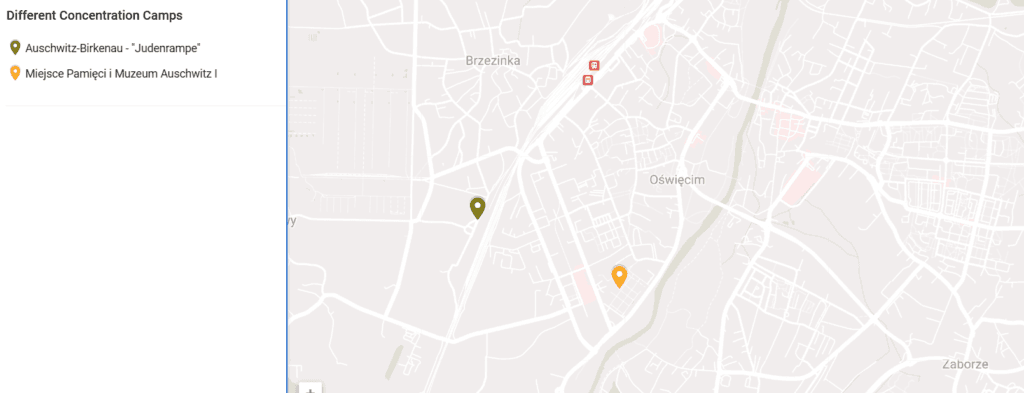
How to Get to Auschwitz from Major Polish Cities
From Kraków
Kraków is the most popular base for travellers visiting Auschwitz, thanks to its proximity and rich transport options. While you can reach Oświęcim by bus, train, or car, the journey can be time-consuming, involve multiple transfers, or be stressful due to traffic and parking. Travelling with Mr Shuttle is a superior alternative — it offers direct, comfortable rides with door-to-door service, avoiding the hassle of public transport schedules or navigation.
- By Bus: Direct buses from Kraków MDA station to Oświęcim run several times a day but can take 1.5–2 hours and often involve crowded conditions.
- By Train: Trains from Kraków Główny take about 1.5–2.5 hours, but often require changes and waiting times.
- By Car: Driving yourself takes about 1 hour via the A4 highway,y but includes parking challenges near the museum.
- By Mr Shuttle: Direct, comfortable transfers with flexible pick-up/drop-off points and knowledgeable drivers familiar with Auschwitz visits.
From Katowice
Katowice is another convenient starting point with decent transport links, but similar limitations apply. Public transport options can be limited or involve transfers. Again, Mr Shuttle provides a more relaxing and efficient journey.
- By Train: Approximately 1.5 hours, sometimes with transfers.
- By Car: It’s Around a 45-minute drive, but parking can be an issue.
- By Mr Shuttle: Reliable, stress-free door-to-door transfers tailored to your schedule.
From Warsaw
Visiting Auschwitz from Warsaw is possible but less straightforward. The train journey requires a change in Kraków or Katowice and takes over 4 hours. Driving is a long trip of 4–5 hours, and flying to Kraków or Katowice, followed by local transport, adds complexity. For those coming from Warsaw, booking Mr Shuttle from Kraków or Katowice is highly recommended to simplify the experience.
- By Train: 4.5 to 5 hours with transfers.
- By Car: 4–5 hours driving, potentially tiring.
- By Plane: Although flight time is short, coordinating connections and transport afterwards can be inconvenient.
- By Mr Shuttle: After arriving in Kraków or Katowice, enjoy a seamless transfer to Auschwitz without stress or delays.
Comparison Table: Transport Options to Auschwitz
| From City | Bus/Train Time & Issues | Driving | Mr Shuttle Advantages |
|---|---|---|---|
| Kraków | 1.5–2.5 hours, transfers, crowded | ~1 hour, parking problems | Direct, comfy, door-to-door, no stress |
| Katowice | 1.5 hours, possible transfers | ~45 mins, parking challenges | Reliable, tailored to your schedule |
| Warsaw | 4.5–5 hours, multiple changes | 4–5 hours, tiring drive | Smooth transfer from Kraków/Katowice |
While traditional public transport and self-driving are options, they often involve longer travel times, transfers, or parking hassles. Mr Shuttle stands out by providing convenient, comfortable, and efficient transfers tailored specifically for Auschwitz visitors. This service lets you focus on the experience rather than the journey.
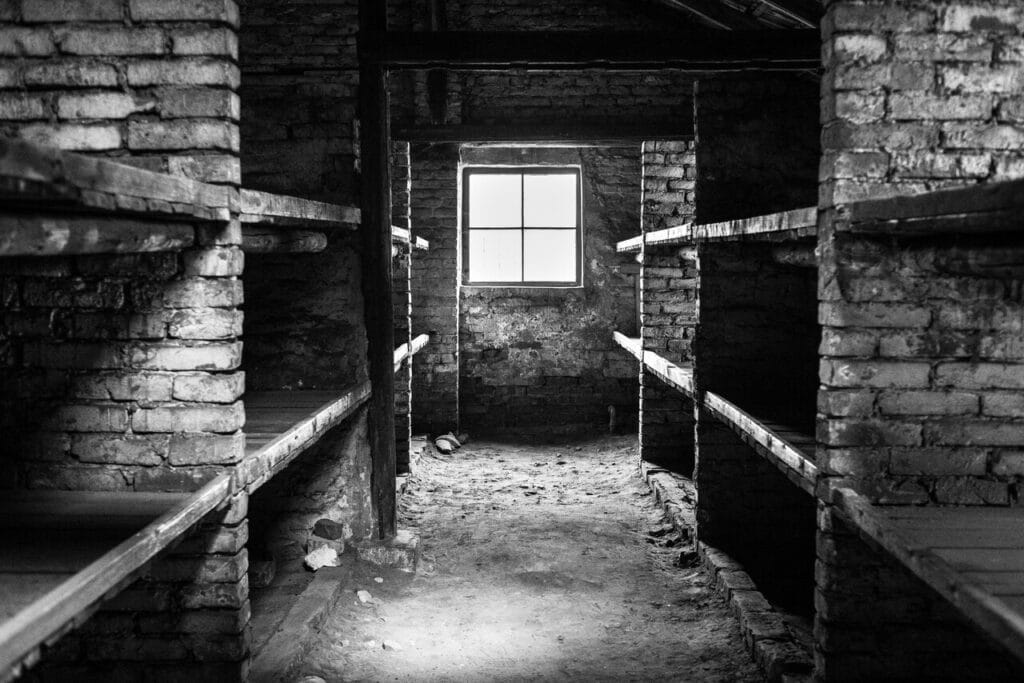
Visiting Auschwitz: What to Expect
The Auschwitz-Birkenau Museum is spread across two main locations: Auschwitz I and Auschwitz II-Birkenau. These two sites are connected by convenient shuttle buses, ensuring easy access between them. Most guided tours include comprehensive visits to both, allowing for a deeper understanding of the historical context and significance. Visiting both parts is essential to fully grasp the scale of the Holocaust atrocities committed here.
- Auschwitz I: Features permanent exhibitions housed in original buildings such as prisoner barracks, prison blocks, and the infamous “Arbeit Macht Frei” gate. The museum’s exhibitions display personal belongings, photographs, and documents that tell the stories of victims and survivors. This site offers a powerful educational experience, highlighting the systematic nature of Nazi crimes and the human suffering endured within these walls.
- Auschwitz II-Birkenau: A vast open-air site that contains the ruins of gas chambers, watchtowers, and kilometres of barbed-wire fences. It represents the largest part of the complex and is a stark reminder of the industrial scale of genocide. Walking through Birkenau, visitors can reflect on the enormity of loss and the importance of preserving memory through respectful tourism and education.
- A full visit takes 3.5–4.5 hours, depending on whether you’re accompanied by a guide. Guided tours often provide invaluable historical context and personal testimonies that deepen the visitor’s understanding. Due to the emotional intensity and stark imagery, visitors are advised to prepare mentally for a sobering experience that honours the victims and survivors.
Photography is permitted in most areas, though the use of flash is strictly prohibited to preserve the site and respect the solemn atmosphere. Visitors are encouraged to dress respectfully and wear comfortable shoes, as the visit involves considerable walking over uneven terrain. Observing these guidelines contributes to responsible and respectful tourism at one of the most important historical sites in Poland.
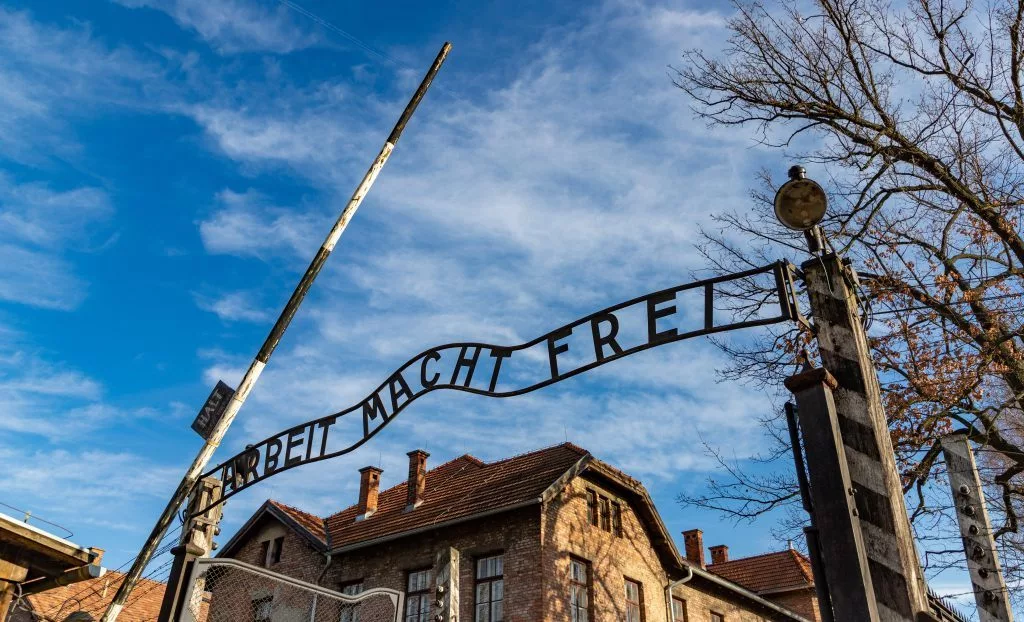
Opening Hours and Entry Requirements
The Auschwitz-Birkenau Memorial is open every day of the year except January 1, December 25, and Easter Sunday.
- Opening hours: Vary by season. Typically open from 7:30 AM to 2:00–7:00 PM.
- Entry tickets: Admission is free, but you must reserve entry passes online in advance. Guided tours require a fee.
- Security check: Expect a basic security screening. Bags must be small (no larger than A4).
Should You Book a Guided Tour?
While self-guided visits to Auschwitz-Birkenau are possible, first-time visitors are strongly encouraged to book a guided tour for a fuller, more meaningful experience. This is where Mr Shuttle stands out as a trusted and highly recommended partner. Specialising in organised trips to Auschwitz from major Polish cities, Mr Shuttle offers much more than just transport – to go beyond logistics, it ensures comfort, convenience, and flexibility tailored to your needs.
Why choose Mr Shuttle for your Auschwitz visit?
- Expertise and flexibility: Whether you prefer an individual visit, a small private group, or a larger guided tour, Mr Shuttle adapts the experience exactly to your expectations. You decide whether to have a professional guide accompany you or explore at your own pace with convenient shuttle transfers.
- Comfort and reliability: Mr Shuttle provides modern, comfortable vehicles with easy pick-up and drop-off locations, making the travel seamless and stress-free. The shuttle service is punctual and designed to maximise your time at the museum.
- Multilingual guides: Tours are available in English as a standard language, with additional options including German, French, Spanish, Italian, and Polish — check availability to ensure you get a guide speaking your preferred language. This linguistic variety enriches the educational aspect, making the history accessible and engaging for diverse visitors.
- Priority access and hassle-free transport: Booking with Mr Shuttle often means priority admission, avoiding long queues at ticket offices. The direct shuttle connections between Kraków, Katowice, and Oświęcim simplify your journey, allowing you to focus fully on the visit without worrying about complicated travel plans.
Choosing a guided tour through Mr Shuttle is not just about convenience — it’s about respecting the significance of Auschwitz-Birkenau through a well-organised, informative, and compassionate visit. Whether you travel alone or with others, their personalised approach ensures your trip will be both comfortable and deeply impactful.
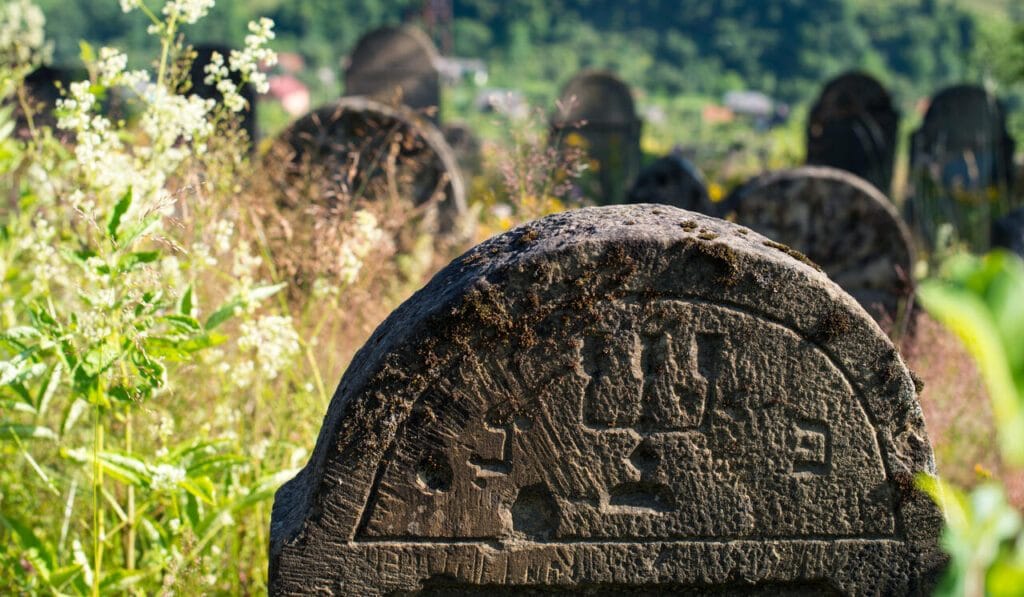
Travel Tips and Etiquette
- Plan ahead: Tickets can sell out days or even weeks in advance, especially in summer.
- Dress appropriately: It’s a place of remembrance, so modest clothing is recommended.
- Be respectful: Keep your voice down and refrain from taking selfies or joking around.
- Prepare emotionally: The content can be overwhelming. Allow yourself time for reflection afterwards.
- Bring ID: You may be asked to show ID when collecting your ticket.
Nearby Places Worth Visiting
If you’re spending more time in the area, consider visiting:
- Oświęcim Old Town: A small historic centre with a few restaurants and a synagogue museum. The peaceful streets offer a glimpse into the town’s past beyond the tragic history of the concentration camp. It’s a good place to experience local life and culture in a reflective atmosphere.
- Kraków: Known for its vibrant culture, the Jewish Quarter (Kazimierz), and Wawel Castle. This city is a perfect blend of history, art, and lively urban life, making it a must-see for visitors to southern Poland. Don’t miss the bustling market square and countless cafés where you can unwind after a day of sightseeing.
- Wieliczka Salt Mine: A UNESCO World Heritage Site near Kraków. This fascinating underground labyrinth carved from salt has captivated visitors for centuries and offers a unique experience far different from typical museums. Guided tours reveal its history, legends, and impressive sculptures.
- Tarnów: A lesser-known Polish town with rich Jewish history. It’s an ideal destination for travellers looking to explore authentic Polish culture away from the usual tourist routes. Tarnów’s charming streets and historic buildings create a peaceful backdrop for thoughtful exploration.
There is the option to visit these local sites individually or combine them in a tour, such as Auschwitz and Wieliczka Salt Mine together for a full-day experience. You can also explore other regional bestsellers and attractions listed on our website.
FAQ: Auschwitz Location and Visit Logistics
FAQ: Auschwitz Birkenau and Auschwitz Concentration Camp
- What was the Auschwitz concentration camp?
Auschwitz concentration camp was a large complex of Nazi camps in occupied Poland during World War II. It included Auschwitz I, Auschwitz II-Birkenau, and Auschwitz III, serving as both labor and extermination camps. - Where was the Auschwitz camp located?
The Auschwitz camp was located in southern Poland, near the town of Oświęcim. This area was under Nazi Germany occupation during World War II. - What was the purpose of Auschwitz II-Birkenau?
Auschwitz II-Birkenau functioned primarily as an extermination camp where tens of thousands of Hungarian Jews and other prisoners were murdered. It contained gas chambers and crematoria used in the mass murder. - Who were imprisoned in the Auschwitz concentration camp?
The camp held Jewish prisoners, including Jewish women, Polish political prisoners, soviet prisoners of war, and non-Jewish prisoners. Many suffered from slave labour and brutal medical experiments. - What does the term “extermination camp” mean in relation to Auschwitz?
An extermination camp was designed for mass murder, and Auschwitz Birkenau was one of the largest Nazi death camps where systematic killing took place. - What was the role of Nazi Germany in Auschwitz?
Nazi Germany established Auschwitz as part of its plan for the Final Solution, targeting European Jews and political prisoners. German authorities ran the camp with SS guards overseeing operations. - How were soviet troops involved in the liberation of Auschwitz?
Soviet troops liberated Auschwitz in January 1945, freeing surviving prisoners from the horrors of the camp. Their advance into German occupied Europe marked the end of the Nazi regime’s control over Auschwitz. - What were the Auschwitz III labor camps?
Auschwitz III, also known as Monowitz, was a labor camp where prisoners were forced to work in nearby factories. It was part of the larger Auschwitz complex. - How many camps made up the Auschwitz Birkenau complex?
The Auschwitz complex consisted of three main camps: Auschwitz I (the first camp), Auschwitz II-Birkenau (the extermination camp), and Auschwitz III (labor camp). - What was the significance of the gas chambers at Auschwitz?
Gas chambers at Auschwitz II were used to kill tens of thousands of prisoners daily as part of the Nazi regime’s genocide. They were disguised as shower rooms to deceive victims. - Who were the Hungarian Jews in Auschwitz?
Hungarian Jews were among the last large groups deported to Auschwitz Birkenau in 1944, with a significant portion sent directly to the gas chambers. This decimated Hungary’s Jewish population. - What were Polish political prisoners at Auschwitz?
Polish political prisoners included resistance fighters and intellectuals imprisoned by Nazi authorities. They suffered harsh treatment and often slave labour. - What role did medical experiments play in Auschwitz?
Nazi doctors conducted cruel medical experiments on prisoners, including Jewish women and soviet prisoners, often resulting in death or permanent injury. These experiments are a dark aspect of the camp’s history. - What was the “family camp” in Auschwitz?
The family camp housed Jewish families temporarily but was part of the Nazi deception before many were sent to gas chambers. It was one of the few places where families were kept together briefly. - How did Auschwitz impact World War II history?
Auschwitz symbolizes the brutal scale of the Holocaust and Nazi Germany’s genocidal policies. Its liberation by Soviet forces was a significant moment in ending Nazi terror. - What happened during the death marches from Auschwitz?
As Soviet forces approached, Nazi guards forced starving prisoners on death marches to other camps, causing thousands of deaths. These marches were part of the Nazis’ attempt to hide evidence. - What was the significance of the Polish army barracks at Auschwitz?
The Polish army barracks were some of the original structures repurposed by Nazis in Auschwitz I for prisoner housing and administrative purposes. - Were there other concentration camps similar to Auschwitz?
Yes, there were other concentration camps across German occupied Europe, but Auschwitz was the largest and most notorious for mass murder. - How did Soviet prisoners suffer at Auschwitz?
Soviet prisoners of war were subjected to harsh conditions, forced labor, and many were killed in medical experiments or gas chambers. - What was the role of SS guards at Auschwitz?
SS guards were responsible for running the camp, overseeing prisoner labour, and carrying out executions, including operating the gas chamber and crematorium. - What is the Auschwitz-Birkenau State Museum?
The Auschwitz Birkenau State Museum preserves the site as a memorial and educational centre, documenting the history of the Nazi concentration camp and its victims. - How is Auschwitz I different from Auschwitz II?
Auschwitz I was the main camp and administrative centre, with original buildings and some labour functions, while Auschwitz II-Birkenau was primarily the extermination camp with gas chambers. - What was the fate of Jewish women in Auschwitz?
Jewish women faced brutal conditions, forced labour, medical experiments, and mass murder in gas chambers at Auschwitz-Birkenau. - How did slave labour function in the Auschwitz camps?
Slave labour was forced on prisoners in Auschwitz III and other labour camps, often under inhumane conditions, leading to death from exhaustion or abuse. - What happened to tens of thousands of prisoners upon arrival at Auschwitz?
Many tens of thousands of prisoners, especially Hungarian Jews, were sent directly to the gas chambers in Auschwitz II-Birkenau soon after arrival. - How did Auschwitz-Birkenau operate during Nazi Germany’s occupation of Poland?
During Nazi Germany’s occupation of Poland, Auschwitz-Birkenau served as a major hub for the Final Solution, where the mass extermination of Jews and other prisoners was systematically carried out. - What was Auschwitz II’s role in the Nazi plan?
Auschwitz II was central to the Nazi plan for the genocide of European Jews, equipped with gas chambers and crematoria for mass murder. - How were gas chambers and crematorium facilities used in Auschwitz?
Gas chambers and crematorium facilities were used to murder and dispose of the bodies of prisoners as part of the extermination process. - What was the condition of the starving prisoners in Auschwitz?
Starving prisoners suffered from extreme malnutrition, exhaustion, and disease, leading to death or easy selection for execution. - Where is the Auschwitz railway station and what was its purpose?
The railway station near Auschwitz was used to transport prisoners from across Europe to the camp complex for forced labour or extermination. - What was the significance of Auschwitz being located in German occupied Poland?
A1: Auschwitz was situated in German occupied Poland, which allowed the Nazi regime to establish one of the largest concentration camps far from the German homeland. This location made it easier to deport and imprison tens of thousands of Jews, political prisoners, and other persecuted groups from across Europe. - Who were the newly arrived prisoners at Auschwitz?
A2: Newly arrived prisoners at Auschwitz consisted largely of Jews from various European countries, including Dutch Jews, as well as political prisoners, Soviet prisoners of war, and non-Jewish prisoners. These arrivals were often separated by gender, age, and fitness, facing brutal selection processes upon arrival. - How was Auschwitz structured and what did Auschwitz consisted of?
A3: Auschwitz consisted of three main parts: Auschwitz I (the original concentration camp), Auschwitz II-Birkenau (the largest extermination camp), and Auschwitz III-Monowitz (a labor camp). Together, they formed a complex camp system where mass murder, forced labor, and inhumane medical experiments took place. - What is known about Dutch Jews at Auschwitz?
A4: Dutch Jews were among the many Jewish transports sent to Auschwitz, especially during the height of the Nazi death camp operations in 1944. Many of these Dutch Jews were sent directly to Auschwitz II-Birkenau, where most faced immediate selection for the gas chambers. - What was the women’s camp at Auschwitz?
A5: The women’s camp was a separate section within Auschwitz-Birkenau, housing thousands of Jewish women, including many Hungarian Jews and Dutch Jewish women. These women endured horrific conditions, forced labor, and often cruel medical experiments conducted by Nazi doctors. - What were Jewish transports to Auschwitz?
A6: Jewish transports referred to the trains carrying Jewish prisoners from ghettos and other Nazi-occupied areas across Europe to Auschwitz. These transports included tens of thousands of newly arrived prisoners, who were often selected immediately upon arrival for either forced labor or extermination.
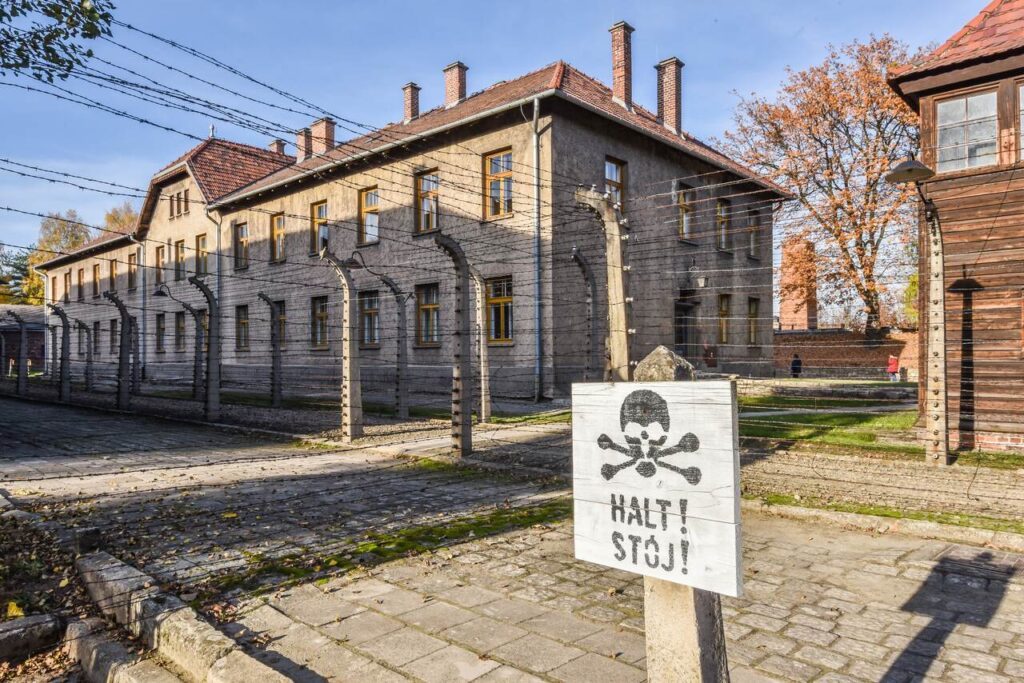
Summary and Visitor Resources
Auschwitz is not just a destination—it’s a profound and necessary journey through history. Located in southern Poland, in the town of Oświęcim, it was part of occupied Poland during World War II. The Auschwitz camp complex consisted of three main camps: Auschwitz I, the first camp and main administrative centre; Auschwitz II-Birkenau, the largest nazi death camp; and Auschwitz III, primarily a labour camp supporting nearby industries.
Visiting Auschwitz Birkenau offers a unique and sobering insight into the atrocities committed by the Nazi regime. The Auschwitz inmates, including Jewish prisoners, Polish political prisoners, and soviet prisoners of war, endured unimaginable suffering within this nazi concentration camp. Today, the Auschwitz Birkenau State Museum preserves the site as a memorial and educational centre, ensuring that the horrors of this death camp are never forgotten.
If you’re planning to visit, take time to prepare yourself emotionally and logistically. Whether you join a guided tour or explore independently, your visit will leave a lasting impression and deepen your understanding of this dark chapter of history.

